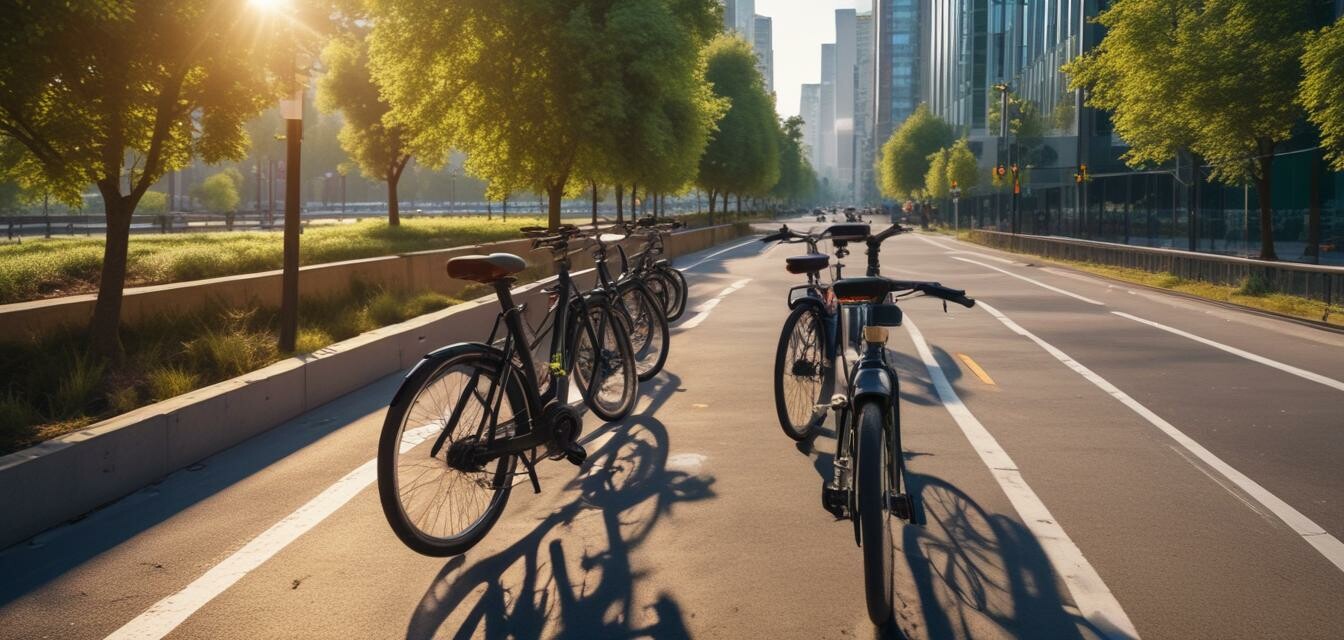
Impact of Electric Bikes on Urban Air Quality
Key Takeaways
- Electric bikes can significantly reduce emissions in urban settings.
- The use of e-bikes encourages a shift from motor vehicles to cycling.
- Increased adoption of electric bikes can lead to improved public health and urban living conditions.
The rise in the use of electric bikes (e-bikes) in urban areas has transformed not just commuting but also the air quality of cities worldwide. As more people switch from motor vehicles to eco-friendly e-bikes, we witness positive shifts in air quality and overall public health. In this article, we will explore the impact of electric bikes on urban air quality and delve into the trends that are driving this movement.
The connection between transportation and air quality
Transportation is one of the largest contributors to air pollution in urban areas. Traditional gasoline and diesel vehicles emit harmful pollutants, including nitrogen oxides (NOx) and particulate matter (PM), which can adversely affect air quality and public health. Electric bikes, on the other hand, offer a sustainable alternative that is less harmful to the environment.
How electric bikes improve air quality
Electric bikes can play a crucial role in improving air quality in several ways:
| Benefits of E-bikes on Air Quality | Description |
|---|---|
| Reduced Emissions | E-bikes do not produce tailpipe emissions, leading to a decrease in air pollutants. |
| Less Traffic Congestion | By replacing car trips with e-bike rides, we can reduce traffic congestion significantly. |
| Encouraging Cycling Culture | The popularity of e-bikes encourages urban infrastructure changes, promoting cycling and pedestrian-friendly spaces. |
| Enhanced Urban Greenery | Safe cycling routes can lead to increased urban greenery, further improving air quality. |
Recent trends in urban cycling
Recent trends indicate a strong shift toward e-bikes for urban commuting:
- Increased sales: E-bike sales have skyrocketed as more people look for alternative modes of transport.
- Government incentives: Many cities are offering incentives for purchasing e-bikes to encourage greener commuting.
- Infrastructure development: There is an increased emphasis on creating cycling lanes and parking facilities for bikes.
Impact on public health
The implications of improved air quality go beyond just the environment. Studies show that cleaner air leads to:
- Lower respiratory conditions and diseases.
- Decreased rates of cardiovascular diseases.
- Overall improved quality of life for urban dwellers.
Global examples of e-bikes improving air quality
Several cities around the world are witnessing the positive effects of e-bikes on air quality:
| City | Impact on Air Quality |
|---|---|
| Amsterdam | Significant reduction in nitrogen dioxide (NO2) levels attributed to increased cycling. |
| Copenhagen | Cycling culture has led to lower emissions, improving the overall air quality index. |
| San Francisco | Adoption of e-bikes is reducing vehicle trips, leading to better air standards. |
The future of urban air quality with e-bikes
As urban areas continue to grow and evolve, the role of electric bikes will undoubtedly become increasingly important. With supportive infrastructure and policies, coupled with the growing popularity of e-bikes, cities can expect to see:
- Cleaner air and healthier residents.
- Further investments in bike-related infrastructure.
- Continued innovation in e-bike technology and features.
Pros
- Reduces greenhouse gas emissions.
- Improves urban air quality.
- Encourages a healthy and active lifestyle.
- Enhances accessible transport options for all.
Cons
- Initial cost can be high for e-bikes.
- Requires charging infrastructure.
- Weather conditions can impact usability.
Conclusion
The impact of electric bikes on urban air quality cannot be overstated. As cities become more congested and polluted, e-bikes offer a viable solution that can help mitigate environmental issues while improving public health. By fostering a culture of cycling and implementing supportive infrastructure, urban areas can embrace a cleaner and healthier future. For more information on how e-bikes contribute to sustainable living, check out our other articles on buying guides and latest trends.
Stay informed about the latest in cycling
To keep up-to-date with innovations and updates in the cycling world, visit our News & Trends section regularly.